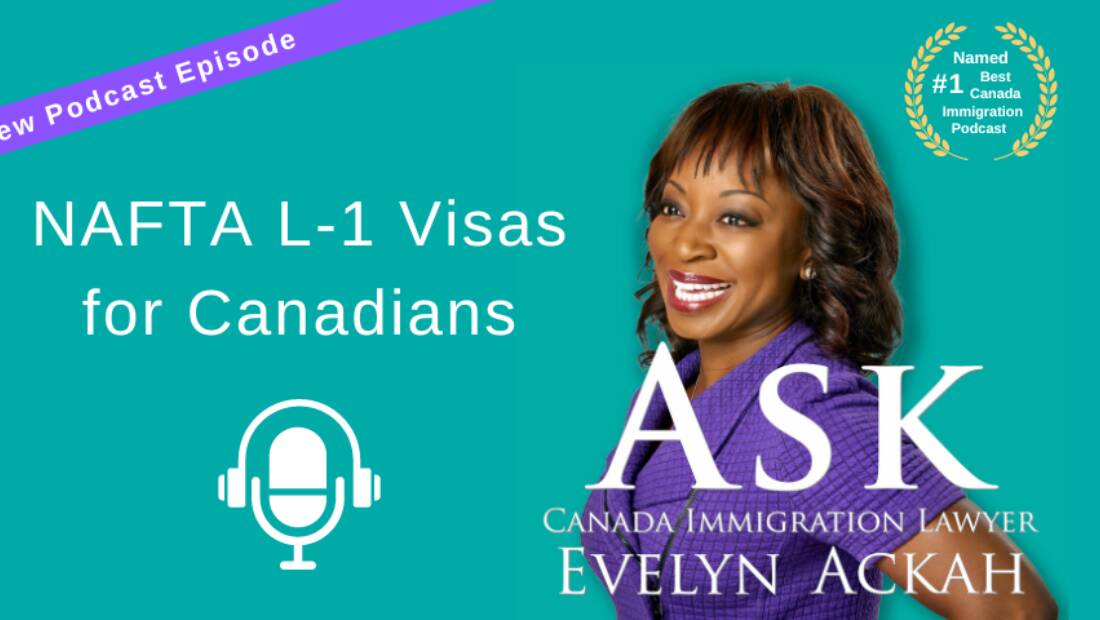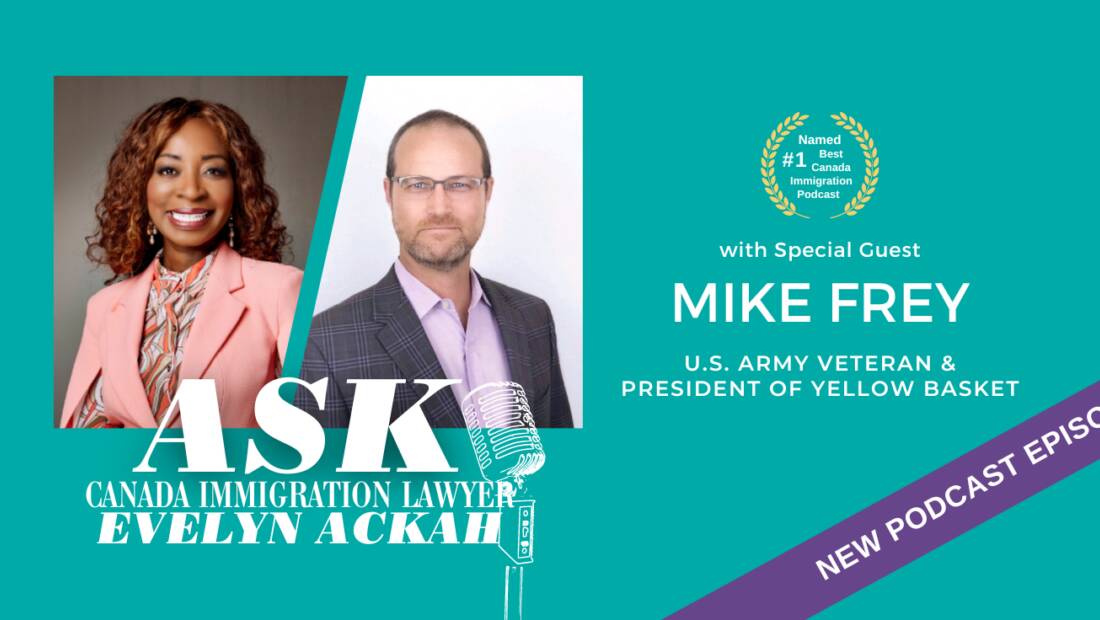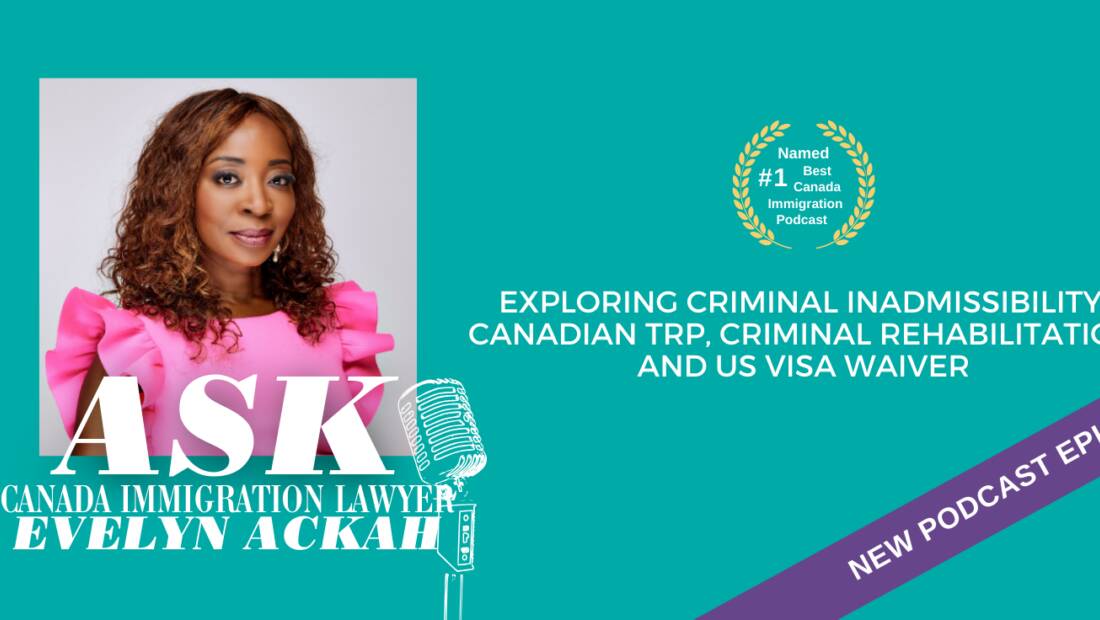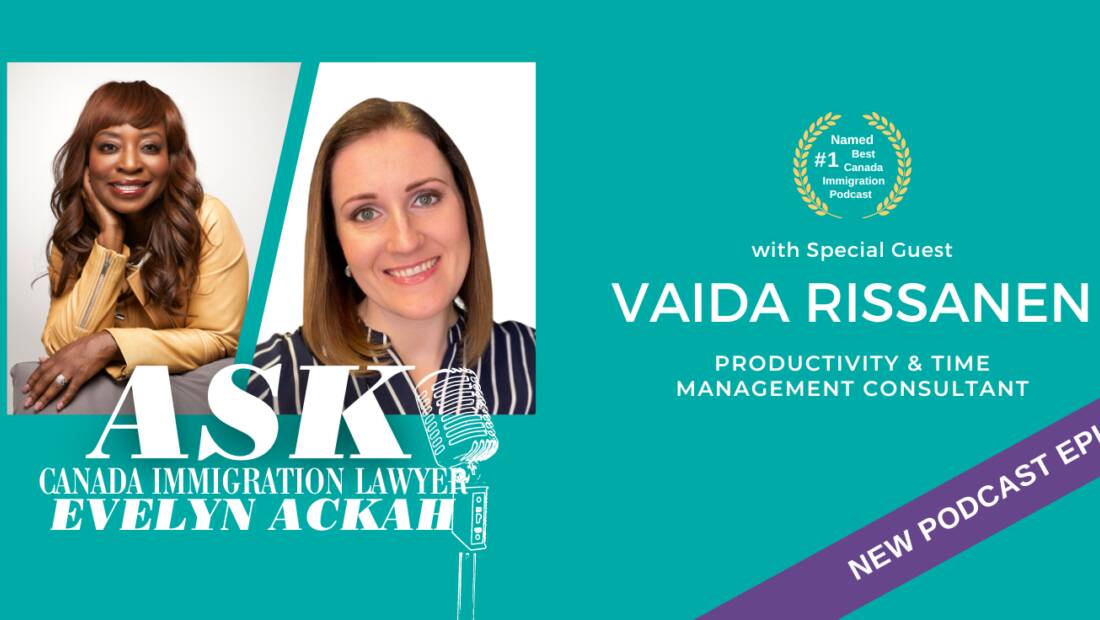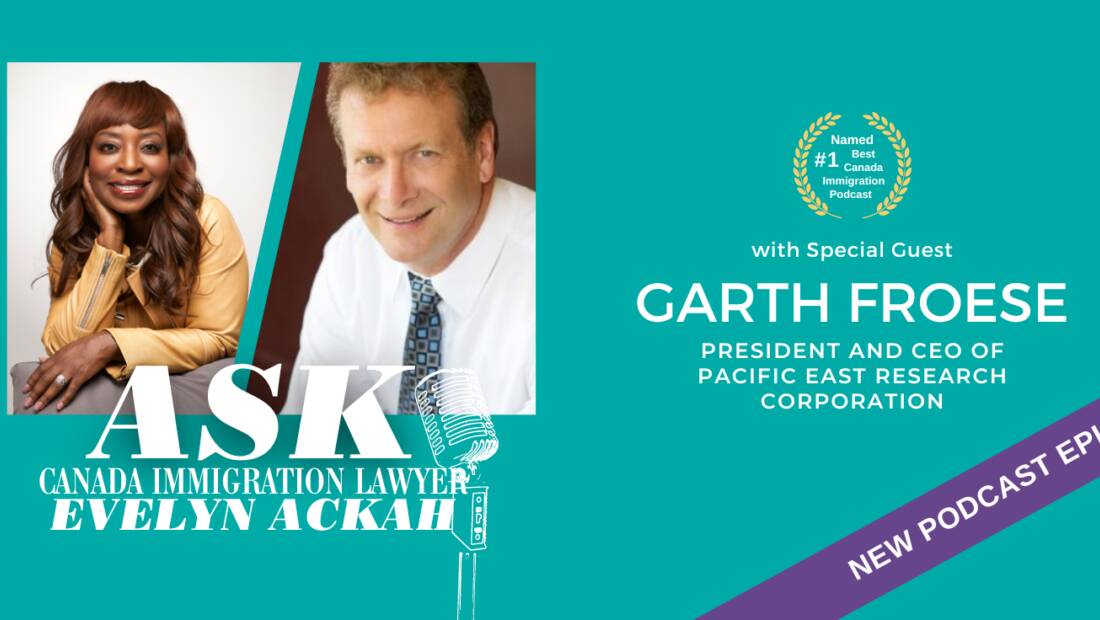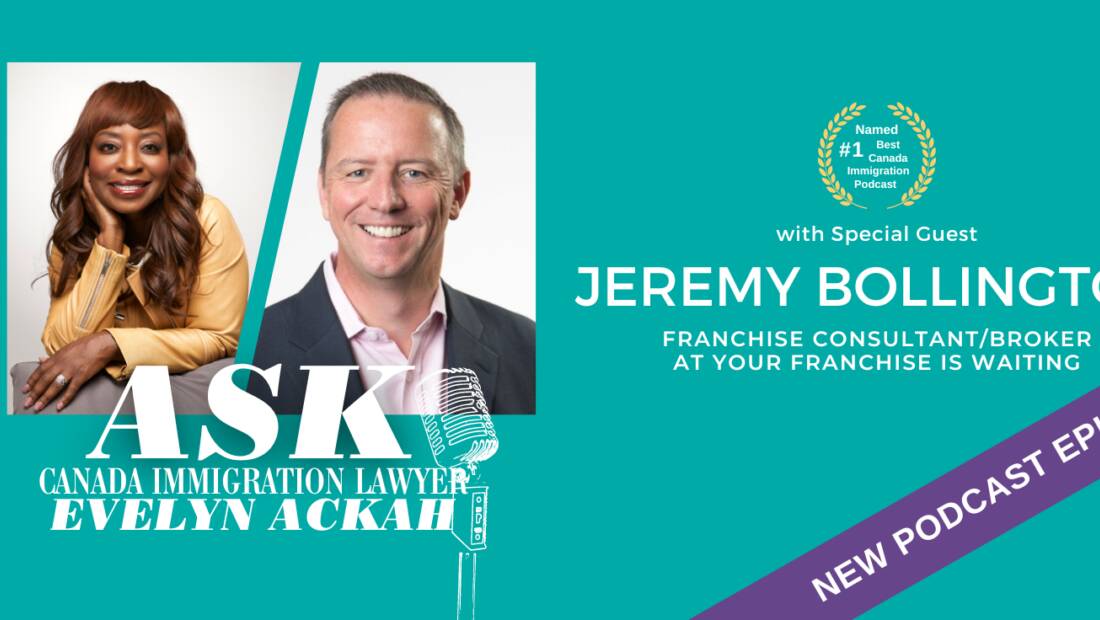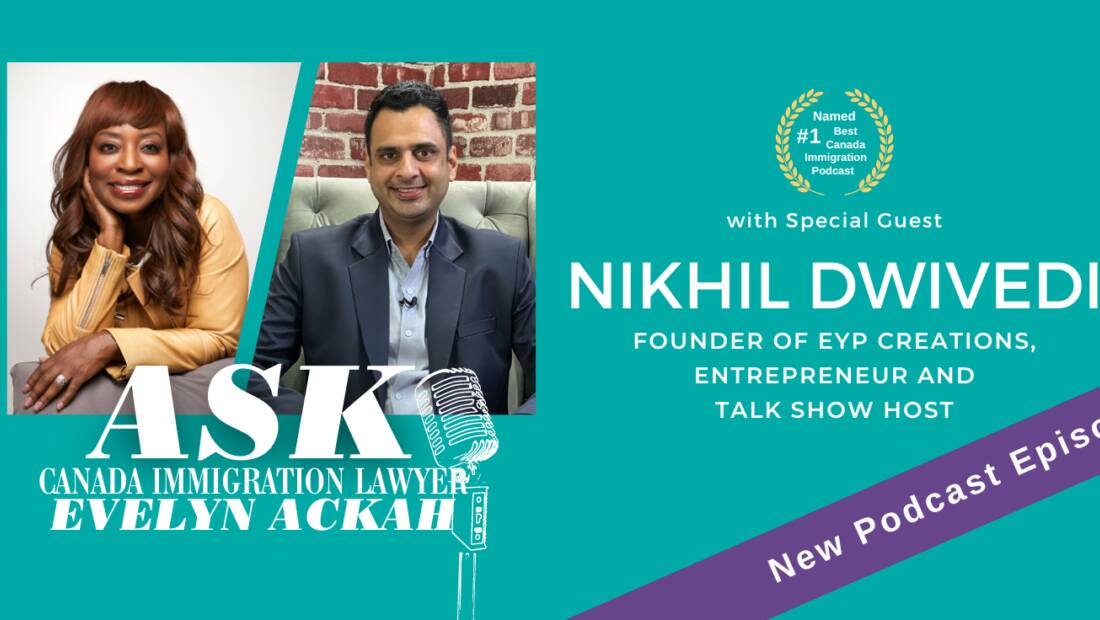Or listen on your favourite podcast app
BOOK YOUR FREE CASE EVALUATION
Calgary immigration lawyer Evelyn Ackah discusses L-1 Intracompany Transfers under the Canadian-US-Mexico Agreement, formerly known as NAFTA. If you have a cross-border business and you want to expand your business to the United States and send key employees to the United States, the L-1 visa may be an option for you. This option is for people who have worked with your Canadian entity for at least one year, and they have to be in a role of either a managerial executive or specialized knowledge worker.

About Evelyn Ackah
Evelyn Ackah is the Founder and Managing Lawyer at Ackah Business Immigration Law. We work with individuals and business owners from all over the world who want to cross borders seamlessly. For more information on immigration to Canada or the United States, Ask Evelyn Ackah at Ackah Business Immigration Law today at (403) 452‑9515 or email Evelyn directly at contact@ackahlaw.com.
The Ask Canada Immigration Lawyer Evelyn Ackah podcast by Calgary Immigration Lawyer Evelyn Ackah was named #1 Best Canada Immigration Podcast in 2022 by Feedspot.
BOOK YOUR FREE CASE EVALUATION
Transcript:
Good day, everyone. This is Evelyn Ackah from the Ask Canada Immigration Lawyer Podcast. I hope you will subscribe to our channel. Also, I'm on LinkedIn Live today. I wanted just to do a quick LinkedIn Live and podcast to talk about NAFTA Treaty immigration, which is one of my favourite areas of law. Now, we're calling it the Canadian-US-Mexico Agreement or the US-Mexico-Canada Agreement, but essentially it's the new NAFTA. One of the areas that we do the most of here at Ackah Law is the L-1 Intracompany Transfers. If you have a cross-border entity and you want to expand to the United States for your business and send key employees to the United States, the L-1 visa may be an option for you and I want you to consider it. This is for people who have worked with your Canadian entity for at least one year, and they have to be in a role of either a managerial executive or specialized knowledge worker.
If they have and they meet that criteria and you have a US corporation that is related to the Canadian entity that you and/or your employee has worked at, you may be able to transfer them to get an L-1 for a three-year term that's renewable, up to five years if they're specialized knowledge worker or up to seven years if they're managerial executive employees. One of the things to make sure of before you consider this is always seek tax advice. We tell all our clients that tax, especially cross border tax, drives immigration. So, we want to ensure that our clients do not have any tax consequences because they didn't structure their transfers appropriately. Once you've already spoken with your accountant and you have a cross-border specialist, then you can come and contact us at Ackah Law and we would be happy to help you to obtain the NAFTA L-1 for your employee that you want to move to the US to expand or grow or even create a new entity in the United States related to the company that you work for now.
The way it works if you are doing a NAFTA L-1 is we need to get a lot of information about the company. We capture a lot of the corporate information, financials, overview, business plan for the future growth, as well as any information about the employees. It's proving that they've worked for the Canadian entity for at least 12 months in the previous three years as an employee or sometimes as a contracted employee if they've basically been full-time with your Canadian entity. We then spend a few weeks, depending on how long it takes to gather all the relevant information, putting together and drafting the best application we possibly can.
That application usually includes our legal submission letter, the forms for US immigration, at least as representative. We use a G-28I form, which is recognized by the US CBP, and then we usually have to do the I-129, which outlines all the details about the US entity that is the petitioning employer. We also draft the US corporate letter of support and confirmation of duties. Sometimes we also do a Canadian employer letter, confirming that they have worked for the Canadian entity for at least 12 months. We also include T4s or other relevant tax documents to prove that they have been employed or being paid by the Canadian entity, as well as lots of corporate information from the website as well as annual reports if relevant, marketing materials, shared certificates, anything we can put together to show that this is a viable US entity and is related to the Canadian entity.
When all of that is drafted and approved and finalized and signed in original, we then prepare our client, who is your employee, to make their application at the airport. I prefer the airport generally because they tend to have more experience with professional applications such as the L-1A for executive managerial or the L-1B for specialized knowledge workers. I always say it's better to catch a flight, get your approval, and know that you have it before you need to move to the United States, either for temporary purposes or if you want to live there for three years and be renewed, you can do that and bring your entire family with you. This is one of the areas where I feel like we really excel at because we've done thousands of them over my 24 years of experience, and it is one that we take great pride in. Sometimes the applications are a couple inches thick because we want to make sure the US CBP has everything they need for your employee to be successful and to be able to get the I-94 document so that they can go and do the business that you've asked them to do in the United States.
I hope this gives you some information about the benefits. I forgot one thing. If you're a Canadian citizen, this is great for you because the new NAFTA only applies to Canadians, Americans, and Mexicans. Many times our clients think their employees are Canadian citizens until we ask them specifically, "Do they have a Canadian passport?" And that's when they realize they're actually permanent residents. They don't have a Canadian passport and they cannot benefit from the NAFTA L-1, which is processed right at the port of entry. It's a great application for this purpose because it allows our Canadian citizens to be processed at the airport rather than waiting months and months for an interview, an appointment at the US Consulate. It's more efficient and tends to be much easier, I would say, if done correctly and appropriately for approval.
The other thing to keep in mind is, with US immigration, everything must be original. That means we end up securing documents back and forth, making sure they're original in blue ink, and also we have two complete signed original blue copy ink packages to center our client for submission at the airport. If any of this is of interest and you are interested in talking more about the L-1 visas and how you may be able to help your employees cross the border seamlessly as an employee for your US entity, please do give us a call and we can do a consultation and answer all your questions about the NAFTA L-1 visa category.
Thanks so much. Thanks for joining the Ask Canada Immigration Podcast. I look forward to speaking with you soon. Please subscribe to our podcast at all the streaming and all the podcast platforms that you may listen to. We'd love also to get a five-star review.
Thanks and share it with your friends and colleagues. Bye-bye.

